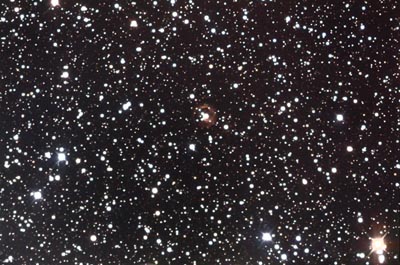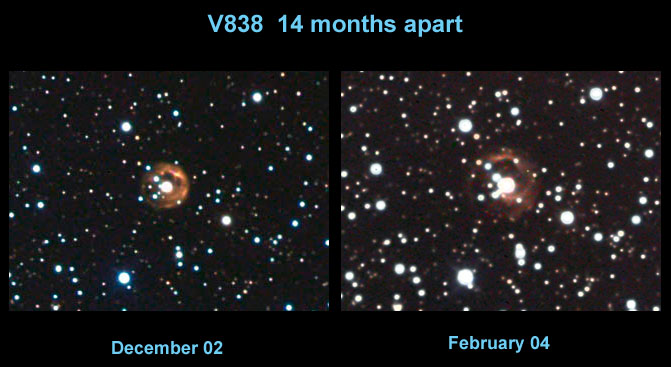This is one of the rarest celestial phenomenon that can be photographed by an amateur telescope. This Light Echo is an expanding wave of nebulosity stemming from the sudden extreme brightening in February of 2002 of central star. This is a once in a lifetime event - get it while you can! Instrument: 12.5" f/5 Home made Newtonian Platform: Astrophysics 1200 QMD CCD Camera: SBIG ST8i NABG with Enhanced Cooling Guider: SBIG ST4 Exposure: LRGB = 60:20:20:40 (RGB Binned 2x2) RGB Combine Ratio: 1: .8: 1.2 Filters: RGB Tricolor Location: Payson, Arizona Elevation: 5150 ft. Sky: Seeing FWHM = 4.0 arcsec (Maxim DL - 10min subframe), Transparency 6/10 Outside Temperature: 0 C CCD Temperature: -20 C Processing Tools: Maxim DL, RG Sigma, Photoshop, AIP4WIN, PW Pro, RW Debloomer.
|
||||||
|
|
||||||
|
FastCounter by bCentral |

